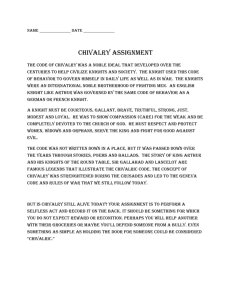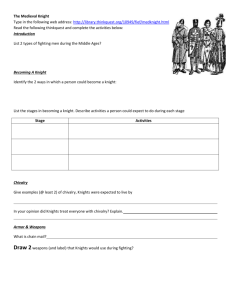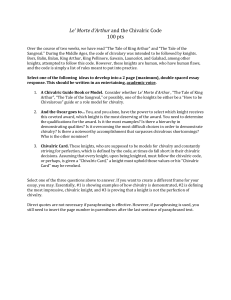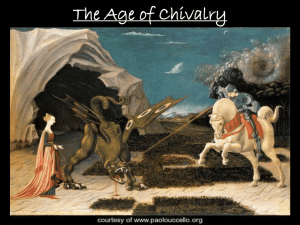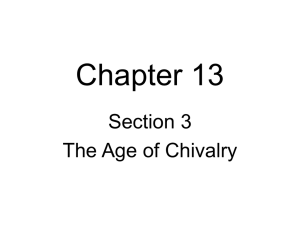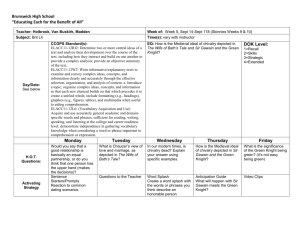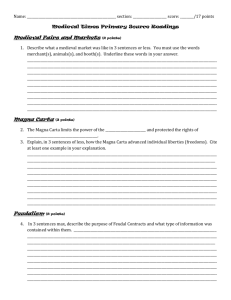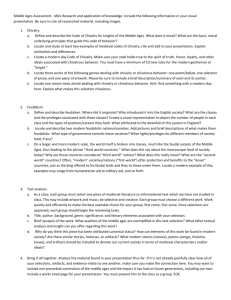Chivalry and the Medieval Knight
advertisement
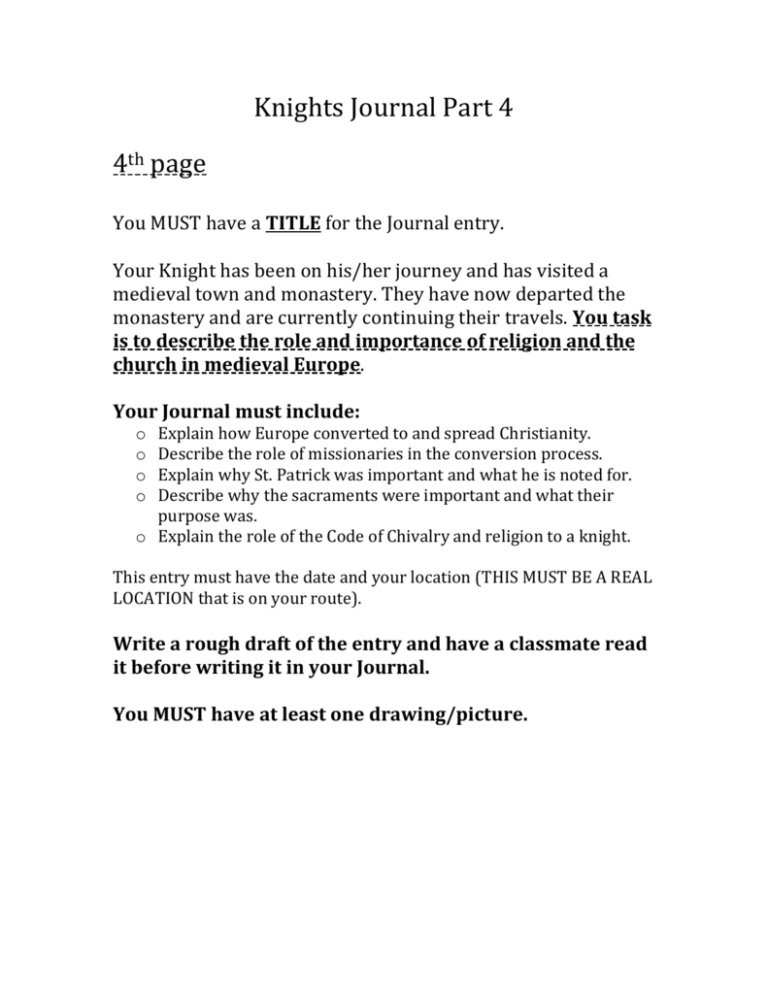
Knights Journal Part 4 4th page You MUST have a TITLE for the Journal entry. Your Knight has been on his/her journey and has visited a medieval town and monastery. They have now departed the monastery and are currently continuing their travels. You task is to describe the role and importance of religion and the church in medieval Europe. Your Journal must include: Explain how Europe converted to and spread Christianity. Describe the role of missionaries in the conversion process. Explain why St. Patrick was important and what he is noted for. Describe why the sacraments were important and what their purpose was. o Explain the role of the Code of Chivalry and religion to a knight. o o o o This entry must have the date and your location (THIS MUST BE A REAL LOCATION that is on your route). Write a rough draft of the entry and have a classmate read it before writing it in your Journal. You MUST have at least one drawing/picture. Chivalry and the Medieval Knight Chivalry was a code of conduct followed by medieval knights and it is a foundation that modern moral opinions are founded on. Two Knights at a Tournament, Plate fr... Over the centuries of the knight Chivalry evolved to cover many many aspects of a mans life from how he behaves in the presence of others to how he handles his underlings and his duties to his king. The code of chivalry got to be very complex but here is an overview of four of the major areas of chivalric behavior. Battle Chivalry - A knight followed strict rules as to what was proper behavior in battle. The chivalric code covered such things as when he fought and how he fought. Some examples of how a knight would behave would be to battle only when necessary or at his kings request and to only use as much force as necessary. One good development of chivalry when it came to battle was the fact that in the early centuries of knights they would often battle each other to the death in order to establish rank and prestige. But this was a terrible drain on the resources of the king and kingdom so the rules of chivalry evolved into jousting tournaments that were not as dangerous. This way knights could establish rank and prestige without maiming or killing each other. Some negative views of battle according to the rules of chivalry: Some weapons and techniques were considered dishonorable such as the dagger and the arbalest. A knight would not use these weapons because they were not knightly. A dagger was a weapon of a sneaky assassin and an arbalest was a brutal weapon of the untrained. A knight's code of chivalry demanded that he face his enemy openly and honestly - it was a "let the best man win" situation. The dagger was a surprise attack and the arbalest was fired from a distance. Chivalry toward other people - One of the most important aspects of chivalry was that it defined how a knight behaved toward other people and other knights. The modern day salute is derived from the chivalric action of tipping open the helmet guard. Chivalric code bound knights to respect each other and to show this respect when they met they would raise their right hand and lift their visors so they could see each others face and show that combat was not their intention. As armor faded from popular use the salute took the place of the visor tipping. The handshake is also commonly believed to be derived from the chivalric display of extending the empty right hand thus showing the other knight that you are not wielding your weapon. Chivalry in religion and belief in god - One of the most powerful aspects of chivalry was it's unyielding following of the tenets of religion. A knight was bound to follow and uphold the beliefs of his religion. Even above those of his king or himself. And a knight was bound the maintain those religous tenets among his lands, people and kingdom. This aspect of chivalry was the strongest aspect and it reached a furious peak during the crusades. Chivalry for the Medieval Knight was a topic that changed over the centuries of the middle ages and it got more and more complex and it eventually involved all aspects of a knights life. The chivalric code covered things like the learning of reading, languages, the arts and musicianship and the handling of lands and law. Chivalry changed from originally being almost solely a rule of combat to being a rule of how a knight lived his whole life.
